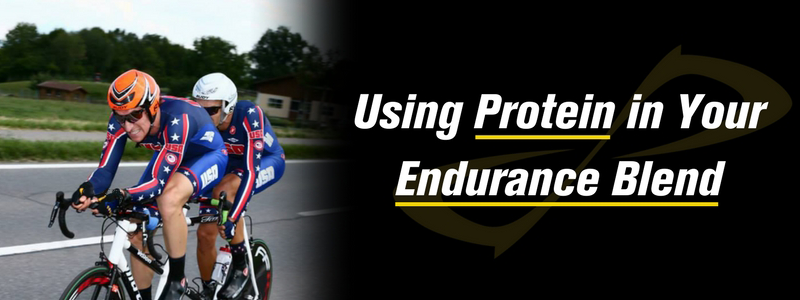“Metabolic Efficiency”: Friend or Foe to Performance?
- 8 Jul 2015

The newest fad being touted as the “secret to success” for endurance training is to train and eat to become “metabolically efficient”. What exactly does this mean? The term efficiency combined with metabolism sounds like an athlete’s dream, especially to an endurance athlete. After all, efficiency means to “save energy without waste or unnecessary effort.” Well, this surely must be the key to success for endurance performance; go as long as possible and waste as little energy as possible. Unfortunately, this new fad is just that, a FAD! “Metabolic efficiency” training or fueling to enhance performance will come at a cost, a big cost which happens to be your performance.
The basic premise of “Metabolic Efficiency” is such that you try to “teach” the body to burn more “fat” longer by eliminating or severely reducing carbohydrate intake to a bare minimum. This will cause the body to adapt and convert “fats” longer instead of converting carbohydrates to produce energy for exercise. The theory sounds promising if the goal of training is to burn fat but if the goal of training is to improve performance, “metabolic efficiency” training is NOT the answer.
Basic science shows the human body as the most well designed machine there is. The human body has innate feedback systems to alter metabolism when survival is necessary or fuel is short. The metabolic adaptation occurs when the body burns “fat” (free fatty acids and ketone bodies) because inadequate carbohydrate stores are available. This metabolic adaptation is actually called ketosis, a metabolic state where energy supply comes from ketone bodies instead of carbohydrates or glucose. This metabolic adaptation to “fats” or ketone bodies will inhibit glycolysis. A molecule of fat can not be broken down by glycolysis unless a glycogen or glucose molecule is present. Glycolysis is a metabolic process that converts glucose or glycogen molecules into pyruvate and hydrogen ions yielding ATP. ATP or Adenosine triphosphate is the energy currency of the human body. A metabolic pathway used in glycolysis that is highly productive yielding ATP is the ETC (electron transport chain) where oxidative phosphorylation occurs. One glucose molecule yields 32 ATP molecules in oxidative phosphorylation which accounts for about 90% of the total ATP synthesis in humans. In ketosis, without glycogen (stored carbohydrates) or glucose (carbohydrates in your blood) aerobic and anaerobic metabolism can not take place sufficiently, hence reduced ATP output. ATP is what creates human power or bioenergetic outputs.
Bioenergetics is a field in biochemistry that regards energy flow through living systems which include human cellular and metabolic processes. Bioenergetics notably includes ATP production and usage along with energy relationships such as the energy that is exchanged and available to do work. Humans are living systems that produce ATP from organic sources, namely carbohydrates, via oxidative phosphorylation. Bioenergetics as it pertains to metabolism of free fatty acids compared to glycogen is one that yields a far inferior release of energy output because many tissues can not convert these fatty acids to synthesize ATP. Metabolism of glycogen molecules will have a greater bioenergetic value than metabolism of ketone bodies. So essentially, the rate in which a human can produce work output (running speeds) and capacity to do work (running for certain lengths of time) will be drastically reduced metabolizing “fats” in lieu of carbohydrates. Metabolism of “fats” will not only yield a slow metabolic combustion or “metabolic efficiency” it will also be accompanied with slow running speeds.
The bioenergetic costs of relying on fats contrary to carbohydrates is such that the velocity of work rates must be diminished. When the human body has inadequate carbohydrate stores it must resort to inferior bioenergetic sources (free fatty acids) in order to survive. Training in survival mode does not make for fast performances. Analysis of thousands of physiological profile tests reveal that after only 2-3 weeks of compromised glycogen stores the anaerobic system will become less functional. When the anaerobic system shuts down the athlete’s ability to produce the same bioenergetic outputs will be physiologically unattainable. This will directly correlate to an athlete’s ability to perform the same event in the same time.
The theory of “metabolic efficiency” enhancing performance not only defies the first and second laws of thermodynamics, it also challenges Carnot’s Efficiency Theorem.
The first law of thermodynamics states that energy output cannot exceed the input. So the theory of “metabolic efficiency” challenges this common law of thermodynamics and also human bioenergetic systems simply by requiring the output to be greater than the input. It is impossible to become more efficient when the output (ATP expenditure) exceeds the input (ATP synthesis). Efficiency refers to how well an energy conversion or transfer process takes place with as little loss of energy as possible. Energy efficiency can be qualitatively measured by the ratio between OUTPUT and INPUT energy. In the case of “metabolic efficiency” principles, the efficiency of the human system will end up being greater than 100% which is thermodynamically and bio energetically impossible.
Carnot’s Efficiency Theorem, which is based on the second law of thermodynamics, that if you raise the temperature of the heat entering (maximum temperature of system) an engine to be greater, the difference of the input and output temperatures will be greater. Therefore, the efficiency or energy conversion of the engine will increase. This also only applies to systems where fuel is burned, again where “metabolic efficiency” concept goes awry… NO fuel, NO efficiency.
The human bioenergetic system is similar to a thermodynamic system which also has a distinctive set of measurable variables. The Grady Human Performance Theory is based on my conjecture that human bioenergetic systems and performance (in events lasting longer than 90 seconds) have 2 main rate limiters that will limit absolute bioenergetic output or performance rates of speed. The two performance limiters are: rate at which one can produce a work output at less than 2 mmol of net lactate (Bla2) and maximum net lactate production capacity (Max Bla). Both of these performance limiters ultimately lead to a Physiological Range™ (PR). In short, the greater the rate of speed at Bla2, the greater the Max Bla, and the greater the PR, ultimately human bioenergetic outputs performance rates will increase in all Systems.
The first and second laws of thermodynamics support my theory which is also analogous specifically to Carnot’s Efficiency Theorem. Just as there are limiters in engine efficiency (max temperature and difference in low and max temps) my postulate is that the main rate limiters in human performance are similar to machines and Carnot’s Theorem. Since there is a loss of energy from the input to output of all machines, the human “machine” also loses energy from the input to output. Also similar to Carnot’s theorem, which only applies to engines where fuel is burned, the Grady Human Performance theory applies to athletes in which ample fuel or substates are available to utilize.
Some endurance coaches have proposed the thought that low glycogen stores and fasting while training is the signal for “adaptation.” The problem here is that they are taking a small piece of information and making shortsighted assumptions to suggest foregoing fueling during training to enhance “adaptation”. Denying an athlete’s body of essential glycogen molecules needed for glycolysis, electron transport, and oxidative phosphorylation will undoubtedly limit performance gains.
These lackadaisical assumptions with negative performance correlations will cause the athletes to potentially suffer long term physiological dysfunction and poor performance. The only adaptation that occurs when foregoing fueling on long endurance or high intensity sessions (also known as glycogen depleting sessions) is that you become more reliant on free fatty acids as a fuel, some early studies suggest increasing a possible increase mitochondrial density but only as a survival mechanism and not a bio energetically valuable adaptation. It is certainly an adaptation but not a positive one for performance or even metabolism.
The term “metabolic efficiency” means that your metabolism is conserving energy but unfortunately for those trying to lose fat that energy conservation comes in the form of fat storage. It may seem almost counter-intuitive, but restricting calories, carbohydrates, and relying on fats as your main fuel source will make you FATTER. While intentional under-fueling may have some exercise benefits or recreational fitness advocates, under-fueling in athletes will 100% of the time lead to under-performance. There are no shortcuts in the laws of energy or natural athletic performance improvements. Energy production and usage comes at a cost and restricting carbohydrate consumption will adapt the body to an inferior bioenergetic source.









